“We hadn’t grown any strawberries before so it was a bit nerve-wracking. However, saw them doing it in the US, so we just wanted to make sure whether we’d succeed as well, selling a product good enough to sell to the market,” says Roger Morris, founder of Phillip Island Strawberries.
Originally, the business started a pilot with 15 towers, to test and analyze whether this model could be viable and scalable. It quickly showed much potential, which made the whole family pivot their work efforts and focus on ‘open field vertical farming’.
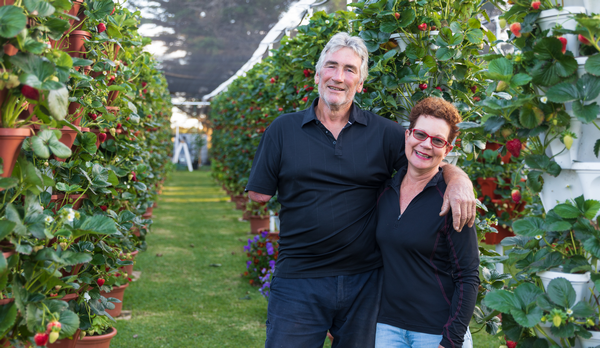
Roger and Faye Morris
Located on a 2,5 acres plot of land, Philip Island Strawberries has dedicated half an acre to cultivate 7500 strawberry plants vertically. Besides fruiting crops, 100 tomato plants and other vegetables are grown, such as capsicum and cucumbers. The strawberries are either sold at 250gr for $5 AUD or at 500gr for $9AUD.
Un-arable land made useful
Phillip Island only counts about 11.000 inhabitants and has limited infrastructure. A large part of the island is home to ‘fairy penguins’ that are based in protected national parks. “We’re lucky to farm here, as we have to battle many strong winds and are challenged by harsh nature elements. It did teach us that previously ‘unsuiting agricultural land’ can be made useful with different growing methods such as ours,” Roger adds.
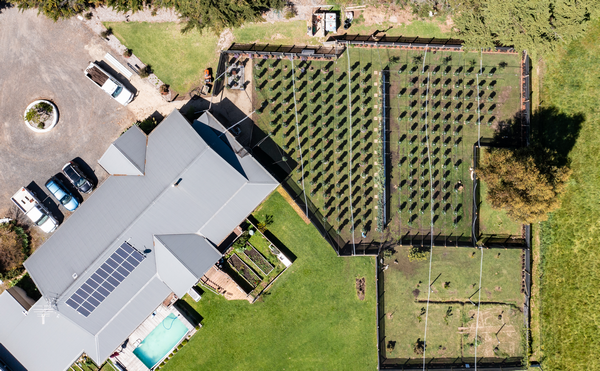
Helicopter view of the premises
This year, the farm is set to harvest 1kg per plant per season, which is November to mid-April. Meaning that a total of 7500kg of strawberries will be harvested this season. Roger points out that they can increase the number by adding greenhouses to extend the season, however, there’s no interest in doing that. “We want to grow outside, using the natural elements, whereas our customers would agree that the product is better tasting when grown outside.”
Tourist attraction
The strawberry farm makes a lovely amusement for tourists and locals. “We love seeing people out there on the farm as they’ll be able to taste the organic strawberries themselves. We don’t care if they try our crops and walk out without buying anything. It’s the experience we want to offer them being on the farm,” says Roger.
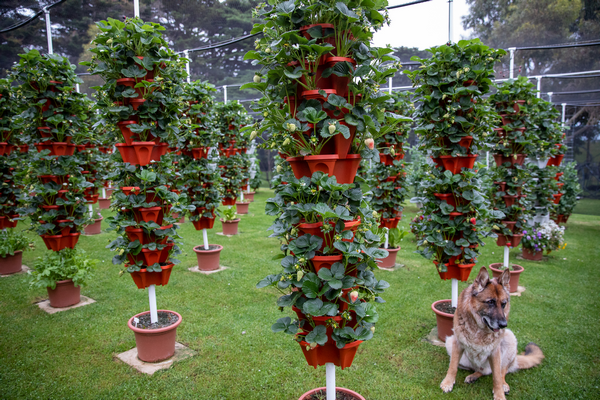
Wookie, the family's 13-year-old German Shephard, is very well known at the farm and loves getting people's attention
However, there unfortunately are elements that come along with growing outdoors such as damage and partial crop loss. In the end, what’s most important for Phillip Island Strawberries is the flavor of the product and how it tastes. “For us, it’s not important that it’s always picture perfect.”
Luckily, Roger’s wife Faye has quite the appetite for cooking, thus found a proper solution for the damaged berries. Her homemade jams are now a local treat and can be found in the farm shop, as one of their signature products.
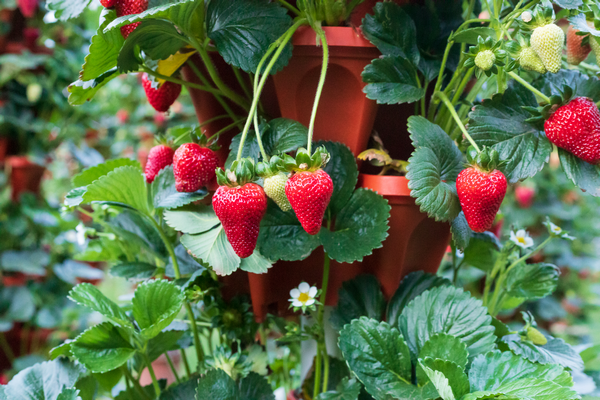
Berries close-up
Staying local, rather than become bigger
As of now, the family has no desire to scale up their business to eventually increase sales and add retail chains to their clientele. “We enjoy the contact with the community and that visitors can pick the fruit themselves.”
Locally, Phillip Island Strawberries hopes to produce for restaurants, ice cream shops and other suppliers in the future, keeping their distance from the local supply chain businesses. Roger’s daughter Jess is soon moving to the island with her family becoming more involved within the business and finding more business relations.
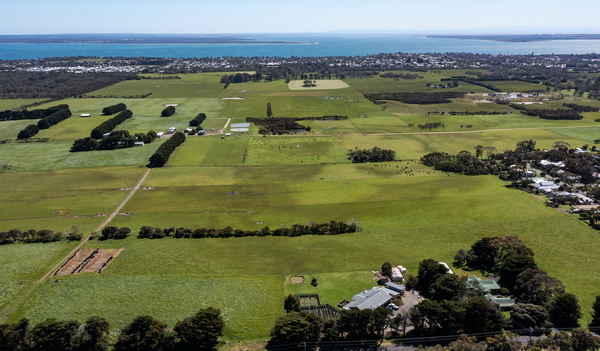
A sweet shot of Phillips Island, with in the right corner below a view of the farm
Accessible for ‘less flexible’ workers
The vertical side of it has become more important than cultivating strawberries. Roger beams about the many crops that can be grown with vertical towers, using much less space and water.
Besides that, Roger says he is very happy with the vertical growing towers as it has given him hope for future farmers. "These kinds of towers help me, someone with a physical disability, the ability to grow in spite of it. Therefore, environmentally and physically it’s a much more amicable way to grow than literally in the field." As Roger explains, people with disabilities can easily customize the way they grow to their needs.
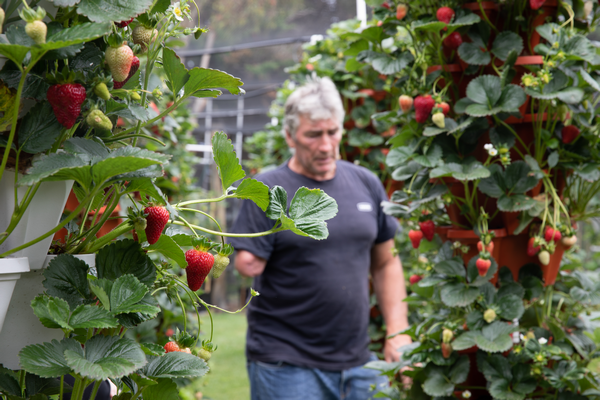 Roger working at the farm
Roger working at the farm
Therefore, they see a huge advantage in this type of growth. Phillip Island Strawberries supplies have supplied several systems to people with disabilities, allowing them to be involved with farming as well. Resulting in demand for growing towers from Victoria, which evolved the company into a farming- and supplier business. “In some way, the strawberry farm is a display of what can be done with the towers.”
Given his age, Roger is in his early 60s, which allows him to enjoy work and run a conventional strawberry farm. Roger sees no future in strawberry farming, the conventional way. “At least, not in Australia. It’s way too expensive in terms of nutrients and water use. That’s why this is the perfect solution, especially after we’ve had so many positive results.”
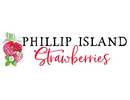 For more information:
For more information:
Roger Morris, Founder
info@phillipislandstrawberries.com.au
Phillips Island Strawberries
www.phillipislandstrawberries.com.au
